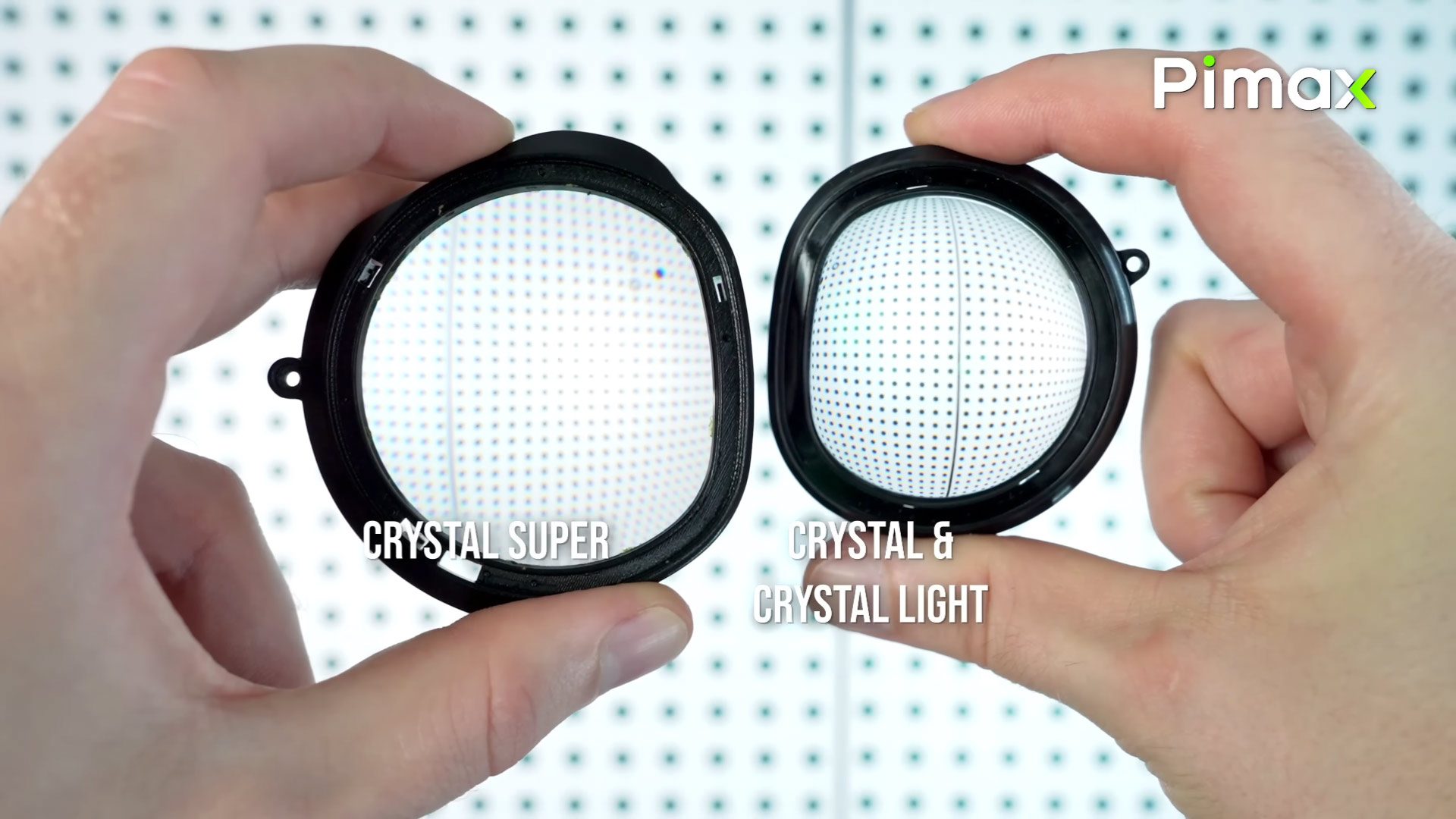Pimax announced that Crystal Super, its next high-resolution PC VR headset, is actually going to be a bit slimmer than originally planned, showing off a reduction in the headset’s exterior during a new update video.
Unveiled earlier this year alongside Crystal Light, the Crystal Super variant is a bit of a different beast, including the addition of eye-tracking, automatic interpupillary distance (IPD) adjustment, and the ability to swap between two optional display modules and two optional lenses for varying pixel density and field-of-view (FOV).
While Crystal Super was ostensibly slated to be as big as the others in the Crystal lineup, Pimax announced it’s reduced the exterior size by “nearly 30 percent,” showing off a new, smaller design.
It still seems to be in early stages of development. The company has shown off non-functional prototypes and renders of the form-factor in the video. Though the through-the-lens footage of the new headset is in an older prototype that uses the previous Pimax Crystal housing:
Its display modules boast 3,840 × 3,840 per-eye resolution, letting the user choose a QLED & mini-LED (120Hz) display or a micro-OLED (90Hz) display.
Both versions of Crystal Super however allow you choose between two different lenses: one that provides 50 PPD and a slightly higher FOV of 130° horizontal, and another with 57 PPD and a slightly lower FOV—still to be announced.
Pimax says Crystal Super’s lenses are indeed “30 percent bigger” than those found on Crystal and Crystal Light. The image below is of the 50 PPD lens.

The QLED version will be ready first, the company says, noting that it’s the model with the most pre-orders. Additionally, the company says the lens providing 57 PPD and a lower FOV is still in development.
All models of Crystal Super are currently available for pre-order reservation, with shipping estimated for Q4 2024.
The base model with QLED display is priced at $1,800 with inside-out tracking, while the micro-OLED model is priced at $2,000. A bundle with both display modules is also available for $2,400. Controllers and optional SteamVR tracking faceplate are sold separately.






